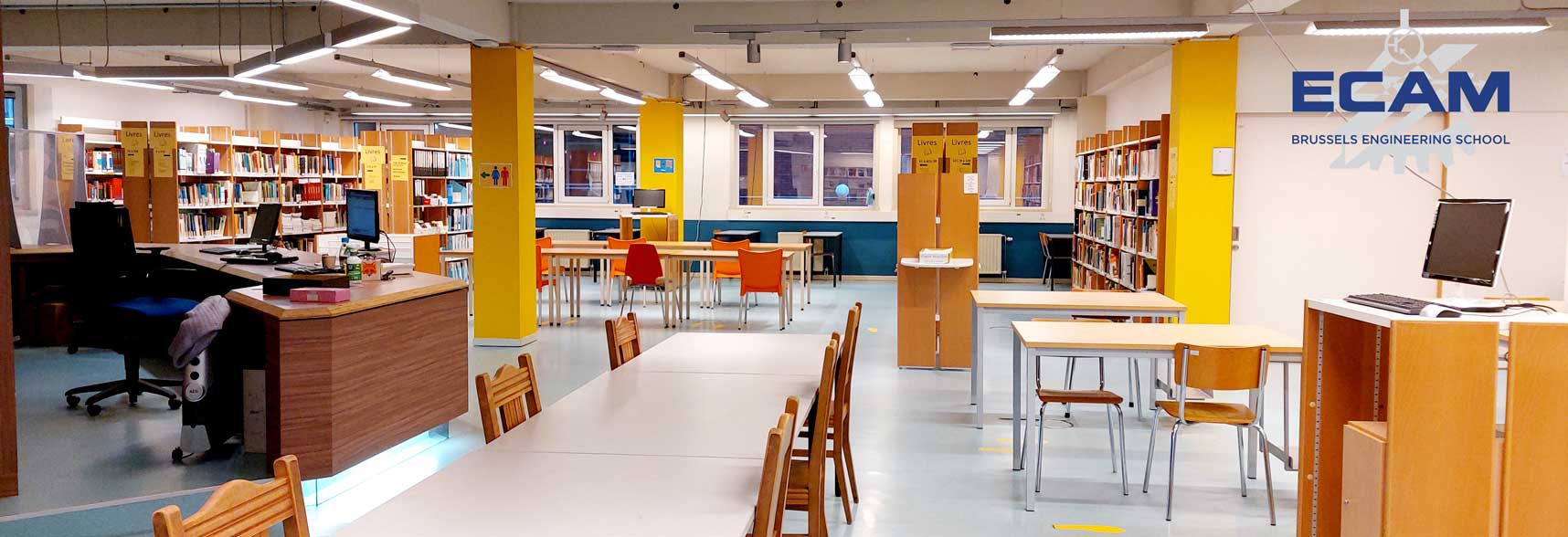EphÃĻseLe catalogue de la bibliothÃĻque de l'ECAM
DÃĐtail de l'auteur
Auteur Ahmed Alaa |
Documents disponibles écrits par cet auteur (1)


 Visionner les documents numÃĐriques
Affiner la recherche
Visionner les documents numÃĐriques
Affiner la rechercheInverse kinematics, inverse dynamics and metabolic cost analyses in healthy individuals during split-belt treadmill walking at two different effort conditions using OpenSim / Barbara TCHOUMTA TOFEUN

Titre : Inverse kinematics, inverse dynamics and metabolic cost analyses in healthy individuals during split-belt treadmill walking at two different effort conditions using OpenSim Type de document : Travail de fin d'ÃĐtudes Auteurs : Barbara TCHOUMTA TOFEUN, Auteur ; Ahmed Alaa, ; Miguel Ochoa, Langues : Anglais (eng) Index. dÃĐcimale : TFE - IngÃĐnierie de la SantÃĐ RÃĐsumÃĐ : Background Split-belt treadmill walking has been demonstrated to improve walking symmetry in post-stroke patients in the short-term. Several studies have been performed in an attempt to optimize this paradigm for long-term gain in gait symmetry. Aim The aim of this study was to investigate the effect of making the split-belt treadmill walking task more effortful by adding a load on the individual performing the task. Hypothesis It is hypothesized that individuals would learn faster and show greater savings during the more effortful condition : with higher loads, participants would incur a higher metabolic cost and therefore, would tend to adjust their gait symmetry faster in order to reduce the metabolic cost incurred. Methods Inverse kinematics and inverse dynamics were performed to determine the differences in joint angles and moments during two different effort conditions. To this end, ten healthy adults participated in a split-belt treadmill walking task in high and low effort conditions during a motion capture experiment. The low and high effort conditions corresponded to a load of 5% and 15% of body weight respectively. Marker positions and force data were collected from motion capture and processed in OpenSim to determine the joint angles and joint moments. The Computed Muscle Control Tool in OpenSim was used to evaluate the metabolic costs. Results It is awaited that the joint angles and moments will differ between the two effort conditions and will correlate with the metabolic cost evaluated, in such a way that, there will be an improvement in learning during the high effort condition. Nevertheless, two other results are possible; either a worsening in learning during the more effortful condition or no change in learning during the more effortful condition. Significance It is expected that this study would provide useful information to rehabilitation practitioners on the worth of making the split-belt treadmill task more effortful and would allow investigation for a possible extension of this practice to patient population. Inverse kinematics, inverse dynamics and metabolic cost analyses in healthy individuals during split-belt treadmill walking at two different effort conditions using OpenSim [Travail de fin d'ÃĐtudes] / Barbara TCHOUMTA TOFEUN, Auteur ; Ahmed Alaa, ; Miguel Ochoa, . - [s.d.].
Langues : Anglais (eng)
Index. dÃĐcimale : TFE - IngÃĐnierie de la SantÃĐ RÃĐsumÃĐ : Background Split-belt treadmill walking has been demonstrated to improve walking symmetry in post-stroke patients in the short-term. Several studies have been performed in an attempt to optimize this paradigm for long-term gain in gait symmetry. Aim The aim of this study was to investigate the effect of making the split-belt treadmill walking task more effortful by adding a load on the individual performing the task. Hypothesis It is hypothesized that individuals would learn faster and show greater savings during the more effortful condition : with higher loads, participants would incur a higher metabolic cost and therefore, would tend to adjust their gait symmetry faster in order to reduce the metabolic cost incurred. Methods Inverse kinematics and inverse dynamics were performed to determine the differences in joint angles and moments during two different effort conditions. To this end, ten healthy adults participated in a split-belt treadmill walking task in high and low effort conditions during a motion capture experiment. The low and high effort conditions corresponded to a load of 5% and 15% of body weight respectively. Marker positions and force data were collected from motion capture and processed in OpenSim to determine the joint angles and joint moments. The Computed Muscle Control Tool in OpenSim was used to evaluate the metabolic costs. Results It is awaited that the joint angles and moments will differ between the two effort conditions and will correlate with the metabolic cost evaluated, in such a way that, there will be an improvement in learning during the high effort condition. Nevertheless, two other results are possible; either a worsening in learning during the more effortful condition or no change in learning during the more effortful condition. Significance It is expected that this study would provide useful information to rehabilitation practitioners on the worth of making the split-belt treadmill task more effortful and would allow investigation for a possible extension of this practice to patient population. Exemplaires(0)
DisponibilitÃĐ aucun exemplaire Documents numÃĐriques
 Ce document n'est visible qu'aprÃĻs identification
Ce document n'est visible qu'aprÃĻs identification
Master_s_Thesis_Report_TCHOUMTA_TOFEUN_Barbara.pdfAdobe Acrobat PDF


